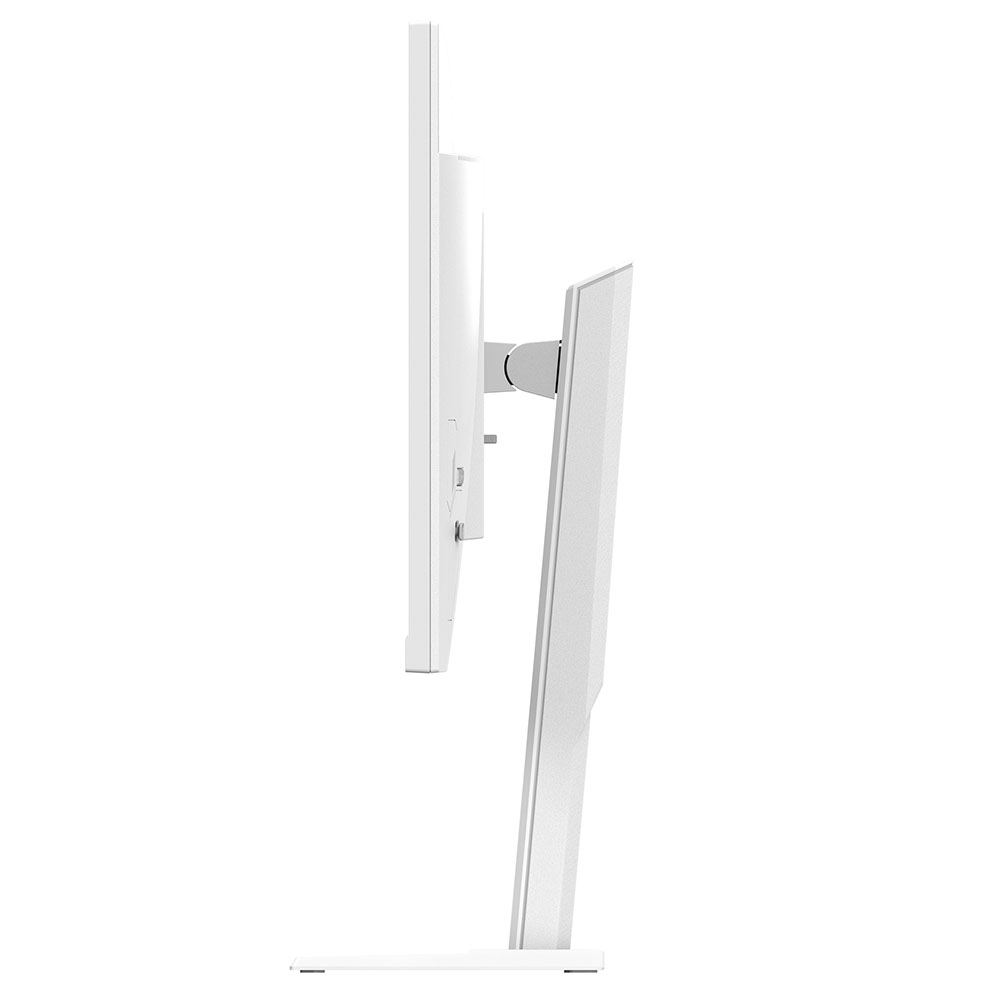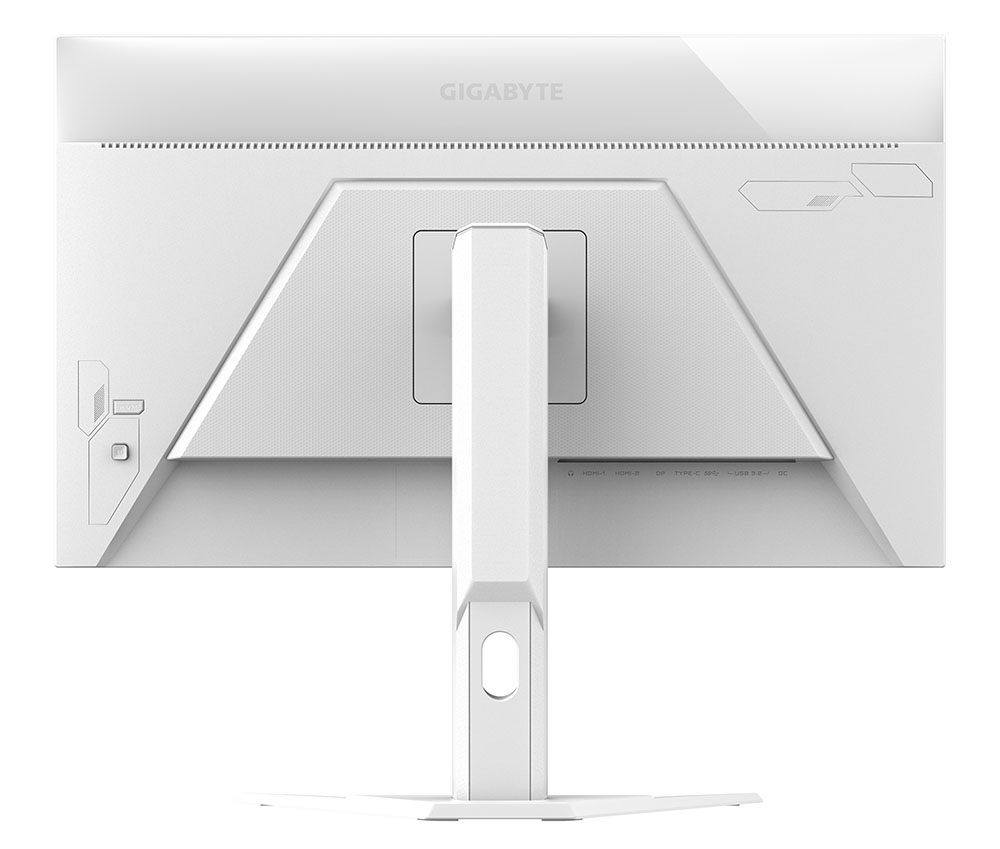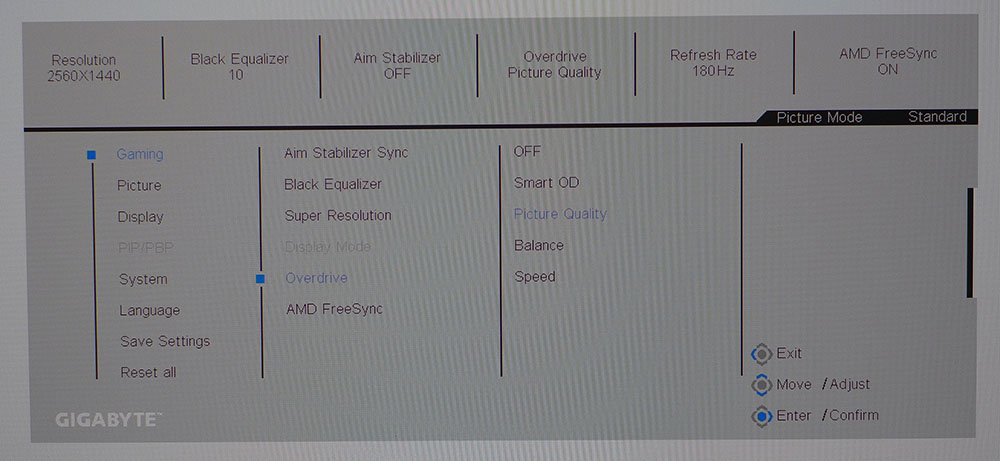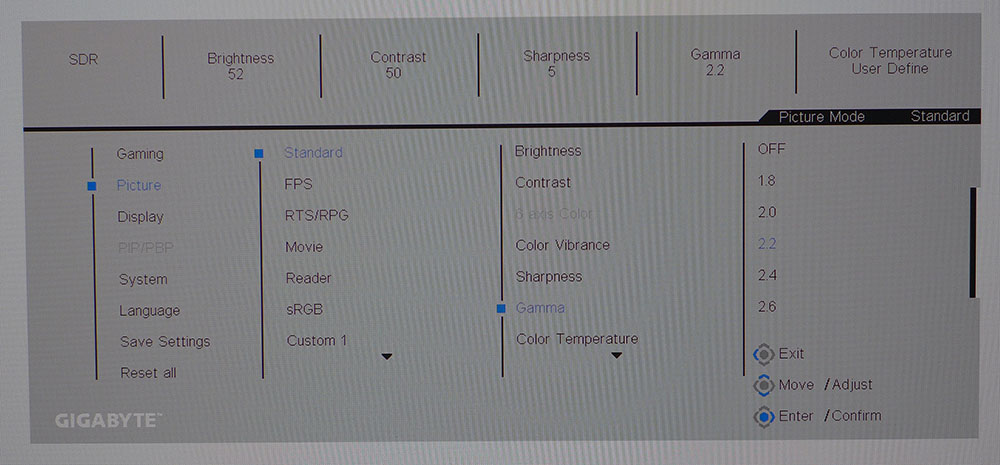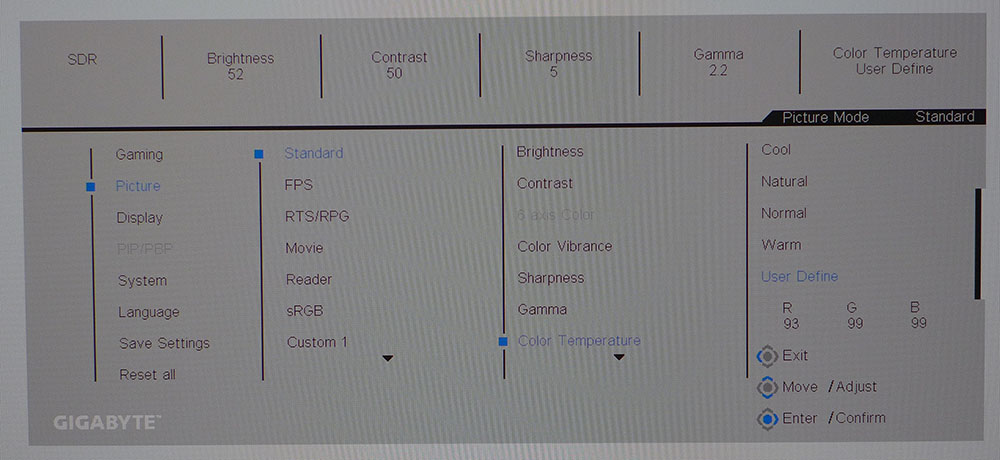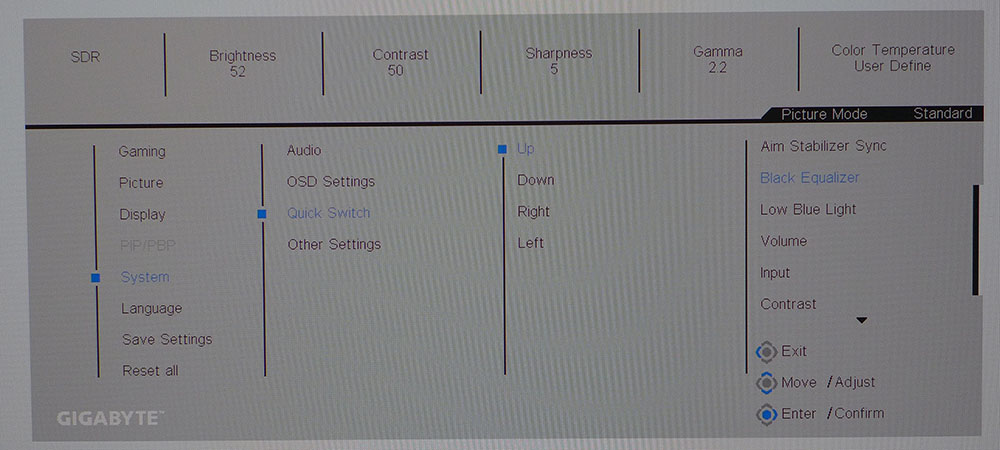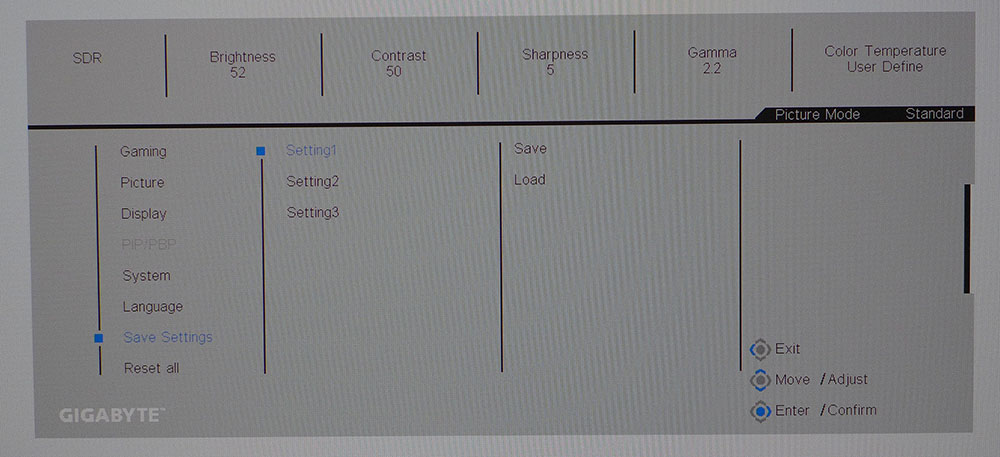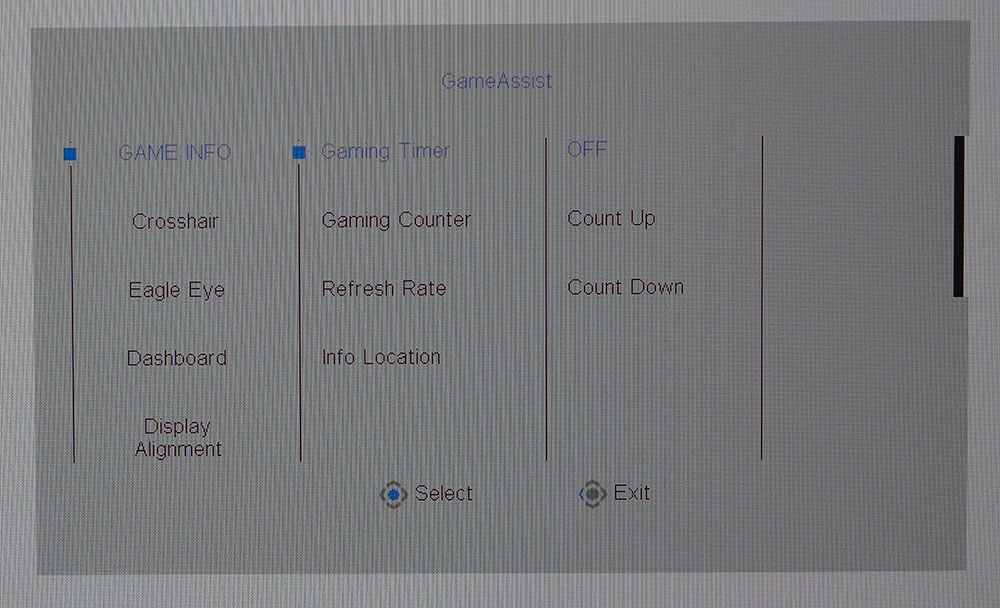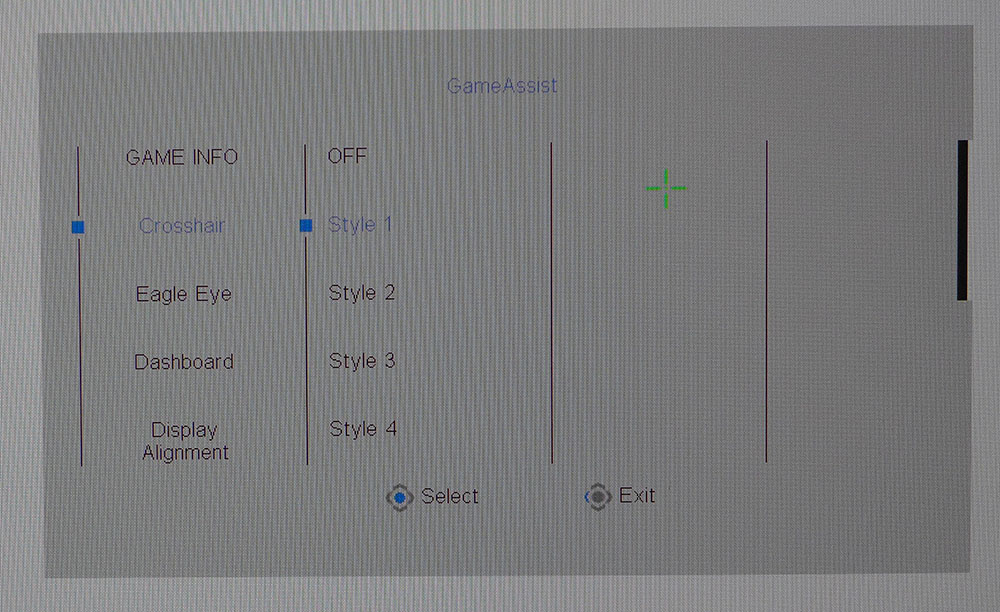It’s hard to deny that there is something cool about white computer monitors. You don’t see them often, so when a manufacturer embraces one and its unique styling, it can’t help but stand out.
Among the best gaming monitors, performance must be the priority, and Gigabyte’s M27QA ICE provides that for both image quality and gaming feel. It’s a 27-inch IPS panel with QHD 2560×1440 resolution, 180 Hz refresh rate, FreeSync and G-Sync, HDR400, and wide gamut color. Though it has a unique high-end look, it doesn’t come with a premium price. It sells for $280 at this writing, so let’s take a look.
Gigabyte M27QA ICE Specs
| Panel Type / Backlight | IPS / W-LED, edge array |
| Screen Size / Aspect Ratio | 27 inches / 16:9 |
| Max Resolution and Refresh Rate | 2560×1440 @ 180 Hz |
| Row 3 – Cell 0 | FreeSync and G-Sync Compatible |
| Native Color Depth and Gamut | 10-bit (8-bit+FRC) / DCI-P3 |
| Row 5 – Cell 0 | HDR10, DisplayHDR 400 |
| Response Time (MPRT) | 1ms |
| Brightness (mfr) | 350 nits SDR |
| Row 8 – Cell 0 | 400 nits HDR |
| Contrast (mfr) | 1,000:1 |
| Speakers | None |
| Video Inputs | 1x DisplayPort 1.4 |
| Row 12 – Cell 0 | 2x HDMI 2.1, 1x USB-C |
| Audio | 3.5mm headphone output |
| USB 3.2 | 1x up, 2x down |
| Power Consumption | 20w, brightness @ 200 nits |
| Panel Dimensions WxHxD w/base | 24.2 x 15.8-20.9 x 7.6 inches (615 x 401-531 x 193mm) |
| Panel Thickness | 1.7 inches (43mm) |
| Bezel Width | Top/sides: 0.3 inch (8mm) |
| Row 19 – Cell 0 | Bottom: 0.9 inch (22mm) |
| Weight | 11.4 pounds (5.2kg) |
| Warranty | 3 years |
If you want a smooth-running gaming monitor and can’t afford an OLED, a fast IPS or VA screen is the next best thing. And for the money, the 180 Hz segment is hard to beat. Its price/performance ratio is highly favorable. The M27QA ICE sits squarely in the middle money-wise at around $280. For that sum, you get better than average IPS contrast. I measured over 1,350:1, ranking it among the very best in its tech genre. That extra depth comes in the form of excellent black levels, which also help bump up color saturation. Though it isn’t a Quantum Dot panel, it fills over 95% of the DCI-P3 gamut, as verified by my tests. Out-of-box accuracy is good enough to make calibration unnecessary.
Gaming performance is solid too with an honest 180 Hz refresh rate achieved without overclock. Adaptive-Sync comes in both forms, and I verified its flawless operation in hands-on gaming tests. Gigabyte provides one of the best overdrives in the business with fixed and dynamic options that do away with nearly all motion blur. If you prefer backlight strobing, that’s here too, with the rare ability to work alongside Adaptive-Sync with no brightness penalty. The M27QA ICE has significant video processing cred.
Physically, you can’t look at it and not be impressed. White monitors are cool because they stand out without a lot of flash. The M27QA ICE’s styling, aside from the color, is understated. But it will go very well with a white PC like Alienware’s offerings or a gaming console. Build quality is high with a stable stand and smooth ergonomics.
Though the price is in the value segment, no features are sacrificed. You get KVM function with USB ports including USB-C which can be a second DisplayPort input. That and two HDMI 2.1 ports mean you can connect to just about anything that outputs a video signal. Gaming features include Gigabyte’s full suite of GameAssist options with frame counters, timers, aiming points, sniper mode and PC health info with chip temps and fan speeds.
For $280, the M27QA ICE delivers a complete gamer’s package that performs well and looks cool doing it.
Assembly and Accessories
The M27QA ICE wears its white-themed styling on the carton which is also white and emblazoned with photos all around. It opens clamshell style to reveal its contents packed in crumbly foam. The stand assembles with a captive bolt and snaps in place. The cable bundle includes an external power brick plus wires for DisplayPort, HDMI and USB-A/B.
Product 360
Though the M27QA ICE’s white finish is unusual, it is also understated enough to evoke the thought that it should just be this way. There’s no reason we can’t have more white monitors. But you will certainly stand out among your friends at a LAN party. The front bezel is thin, flush and black so the only white you see when the picture is on is the trim at the bottom which says “Gigabyte” in gray letters. The base also proclaims “Gaming Series” in case there was any doubt. The image is sharp and bright with no grain from the effective anti-reflection layer.
The panel’s side profile is just 1.7 inches thick, thinner than most 27-inch screens I’ve encountered. The stand is rock solid, providing 5/20 degrees tilt and a 5.1-inch height adjustment. There is no swivel or portrait mode. Movements are very firm with no play or wobble. The M27QA ICE is clearly built for long-term use.
The back also says “Gigabyte” with a few molded-in shapes and generous ventilation across the top. The OSD joystick sits in the usual spot and is the M27QA ICE’s only control key. The input panel is clearly labeled and includes two HDMI 2.1, one DisplayPort 1.4, and one USB-C which can serve as a second DisplayPort input. KVM is further supported by one upstream and two downstream ports, version 3.2. A 3.5mm headphone jack outputs stereo sound and there are no internal speakers.
OSD Features
Pressing the M27QA ICE’s joystick brings up a quick menu with options for KVM and GameAssist. An up-click opens the full OSD. I was surprised to see a white menu with thin black text. Though it fits with the monitor’s styling, it is somewhat hard to read. If the font had a thicker line weight, it would be more visible.
Every menu screen has signal info at the top. You can see the video processing status in the first of seven sections with refresh rate, overdrive and the like. Aim Stabilizer Sync is the backlight strobe, and it works in concert with Adaptive-Sync to completely eliminate motion blur. It has a very slight phasing artifact, which is easier to see in test patterns than in actual content. Or you can use the excellent overdrive, which worked best for me set to Balance. The Smart OD option is dynamic and will vary with refresh rate.
There are nine picture modes in total with Standard being the default and best option. It includes a full set of calibration controls with gamma and color temp presets. There’s also an accurate sRGB mode for those who need color grading capability. The native color gamut covers 95% of DCI-P3, making the M27QA ICE very colorful for both SDR and HDR content.
Quick Switch refers to the joystick directionals and all four can be programmed by the user. This gives quick access to commonly used things like picture mode and input selection. There are three settings memories that can be saved and recalled. This is something all monitors should have, very useful.
GameAssist is a separate menu of gaming aids, including aiming points (green in four shapes), timer, stopwatch, frame counter, sniper mode and PC health data. The M27QA ICE can monitor fan speeds and temps for the CPU and GPU in real-time. The information is shown in a small window in the upper left corner of the screen.
Gigabyte M27QA ICE Calibration Settings
The M27QA ICE is right on the edge of needing calibration but with barely visible errors, the image is pleasing and colorful by default. In the default Standard mode, you get gamma and color temp presets plus RGB sliders for a precise dial-in. I used these to make a small improvement in accuracy. The color gamut covers 95% of DCI-P3 unless you choose the sRGB mode which accurately renders that color space. My recommended settings are below. For HDR signals, there are no adjustments available, and the brightness is locked to 100%. There’s no dynamic contrast, so the picture doesn’t look significantly different.
| Picture Mode | Standard |
| Brightness 200 nits | 52 |
| Brightness 120 nits | 23 |
| Brightness 100 nits | 15 |
| Brightness 80 nits | 8 (min. 59 nits) |
| Contrast | 50 |
| Gamma | 2.2 |
| Color Temp User | Red 93, Green 99, Blue 99 |
Gaming and Hands-on
There are many gaming monitors in the “gets the job done” category, but the M27QA ICE goes beyond them with some of the best video processing I’ve seen in a sub-$300 display. The overdrive is more than enough to manage motion blur which was a complete non-factor in my gameplay sessions. If you can drive it at 180fps, there’s no need for anything beyond the Balanced setting with Adaptive-Sync engaged. QHD resolution makes that an easy task.
For slower frame rates, the backlight strobe (Aim Stabilizer Sync) is a great tool because Gigabyte lets you leave Adaptive-Sync turned on. Brightness is automatically maxed so there’s no loss of light output. I noted a slight phasing artifact in test patterns, but it was nearly impossible to replicate this in any games I tried. Doom Eternal has plenty of fine detail that will magnify any anomalies and I saw none. The video processing here is excellent.
Though I noted merely average HDR quality, it is still a little better than SDR thanks to the M27QA ICE’s wide color gamut and solid accuracy. Blue is especially vivid with just the right amount of over-saturation. It makes cold textures like ice and stone more vibrant but not to the point where they look cartoonish. Warm tones are also bolder than their SDR versions. I wished for a field dimming option to make shadow areas more dramatic but there was none.
Turning to workday tasks, I was able to appreciate the M27QA ICE’s styling and unique physical look. I use a white table to test monitors and the white chassis was a perfect aesthetic complement. Paired with a white PC or gaming console, it’s a look I could enjoy without any distraction from what I was doing. The image is crisp and colorful, well suited for documents, spreadsheets and graphics. Photoshop rendered well with enough pixel density (109ppi) for fine editing. The only thing I would change is the menu color. It’s not a big deal because once set up, you don’t spend a lot of time in the OSD. However, a bolder font would be an improvement against its white background. The style choice makes sense, but its execution could be better.
Physically, the M27QA ICE is a solid package. The stand is smooth and sure in its movements. The lack of swivel is unusual but honestly, how often does one swivel a monitor? There’s plenty of height and tilt range to satisfy any combination of desk height and user size. The KVM feature is handy for peripheral support and very easy to set up. The only things missing here are LED lighting and speakers. Neither make an impact on the M27QA ICE’s usability or performance.
Takeaway: The M27QA ICE is a supremely capable gaming and workday monitor that delivers excellent video processing and a satisfying image for less than $300. It excels at everything and only lacks a bit of extra impact in HDR mode because there’s no dimming. But with lots of color, the image is vivid and detailed. It does well for any task or entertainment activity.
MORE: Best Gaming Monitors
MORE: How We Test PC Monitors
MORE: How to Buy a PC Monitor






